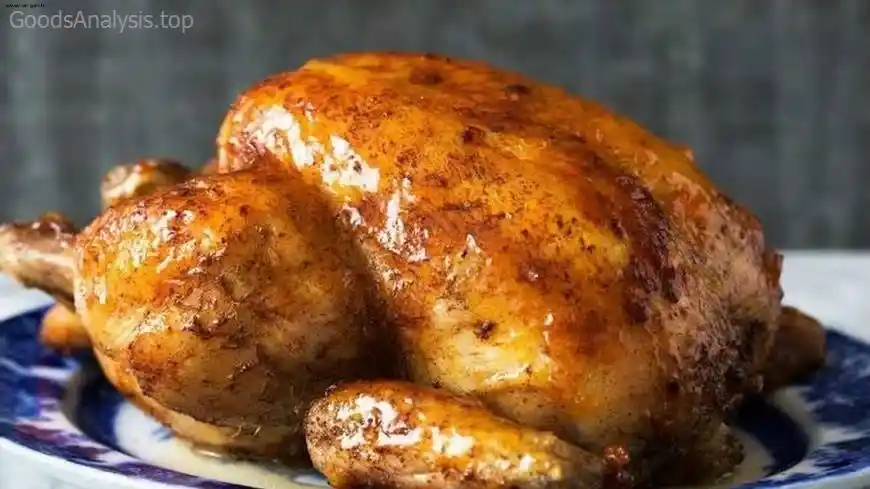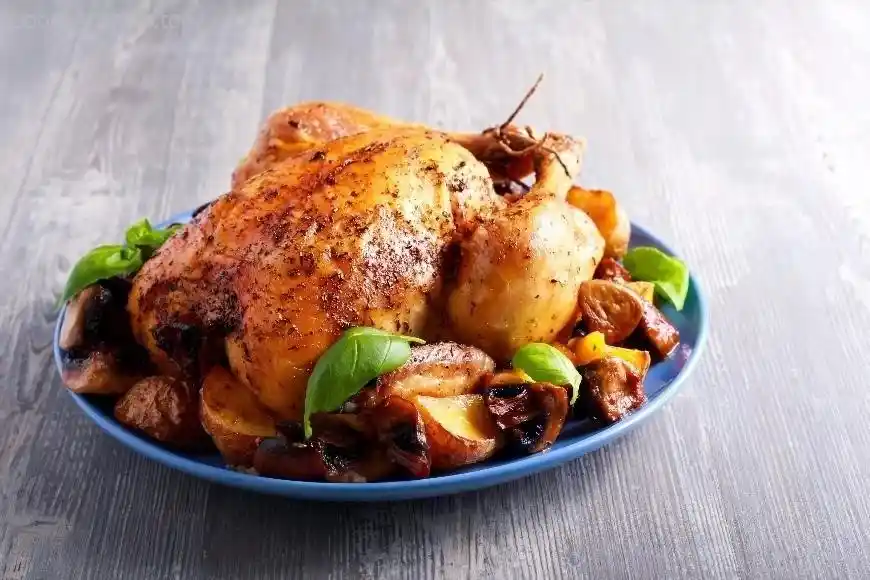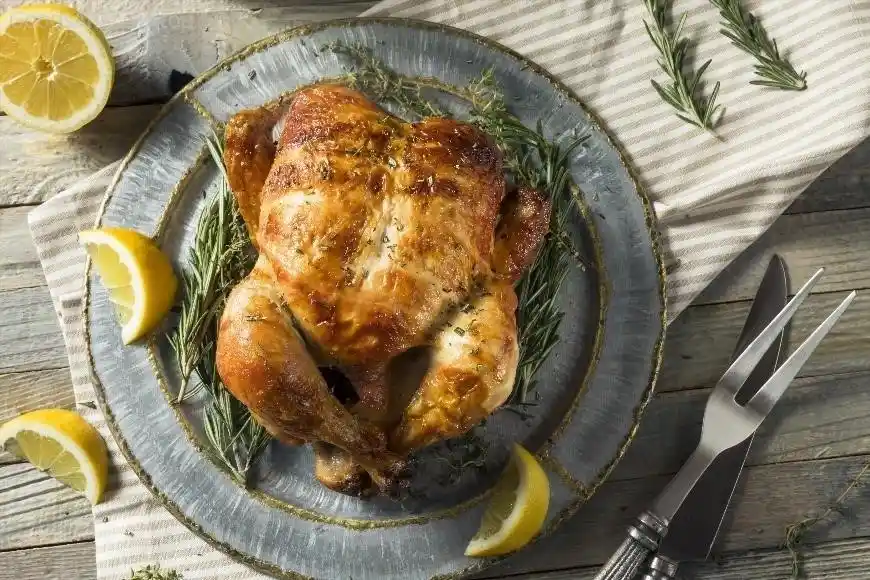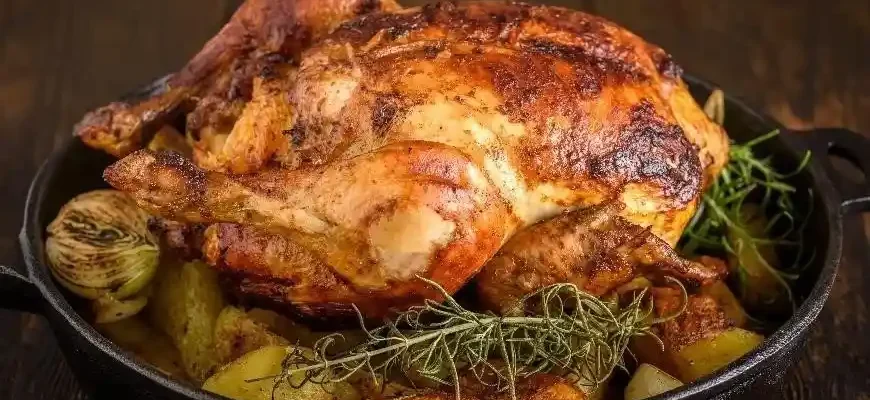Roast chicken. It’s the ultimate comfort food, the one dish that seems to unite everyone, from five-year-olds to the elderly, rich to poor, busy workers to those with a bit more time on their hands. It’s versatile, satisfying, and, when done right, downright magical. But as simple as it may seem, making the perfect roast chicken can sometimes feel like an art form. You can follow the steps in your grandmother’s recipe book, or you can experiment with modern techniques, but one thing is for sure—everyone has their own idea of what makes the “perfect” roast chicken.
As someone who has spent decades in the kitchen, I’m here to share my perspective. I’ll walk you through a detailed, all-encompassing guide to making a roast chicken, covering everything from preparation to the secrets of achieving the crispiest skin and juiciest meat. Along the way, I’ll also discuss the common pitfalls and offer some advice on how to fix them. Consider this a “no stone left unturned” exploration into making roast chicken. Let’s dive in!
Why Roast Chicken?
Before we even get into the details, let’s talk about why roast chicken is such a beloved dish. It’s not just the flavor—it’s the nostalgia, the ease, and the ability to feed a crowd with minimal fuss. Roast chicken is perfect for family dinners, special occasions, or a cozy Sunday afternoon. Nutritionally, it’s a great source of protein, vitamins, and minerals. Plus, if you buy a whole chicken, you can get a lot of meals out of it—think leftover chicken sandwiches or a hearty chicken soup.
There’s also a psychological aspect at play. Cooking a whole bird, with all its skin and bones intact, can make you feel more connected to your food, giving a sense of accomplishment and mindfulness. And when the house smells of roasting chicken, it’s a feeling that almost guarantees smiles around the table.
Ingredients
You’ll need a few basic ingredients to get started. Here’s the list:
- Whole chicken (about 4-5 pounds): Free-range or organic is often preferred, but if you’re on a budget, a regular chicken will work just fine.
- Butter (or olive oil): This is for basting and helping that skin crisp up. Some people swear by butter for flavor, others prefer olive oil for its lightness.
- Salt and pepper: Season generously. This is one of those dishes where you can’t skimp on seasoning.
- Fresh herbs: Thyme, rosemary, and parsley are all great options.
- Garlic: A couple of cloves, crushed.
- Lemon: For the cavity, which imparts a refreshing citrus flavor.
- Onion: Optional, but it adds a beautiful depth of flavor when roasted inside the bird or alongside it.

Step-by-Step Roast Chicken
1. Prep the Chicken
First, you want to ensure your chicken is fully thawed if it’s frozen. The best way to do this is to leave it in the fridge for 24 hours, but if you’re in a rush, cold water thawing works too. Don’t forget to remove any giblets from the cavity (sometimes these come with a chicken, sometimes they don’t—just check).
Pat the chicken dry with paper towels. Moisture is the enemy of crispy skin, so the drier you can get it, the better. If you can, let the bird sit uncovered in the fridge for a few hours or overnight—this will help dry the skin out even more.
2. Seasoning
Here’s where you can get a bit creative. At the very least, you need salt, pepper, and a bit of fat (butter or oil). For a classic approach, rub the bird generously with softened butter or olive oil. Then sprinkle a good amount of salt and pepper inside the cavity and all over the skin.
Next, stuff the cavity with a couple of whole garlic cloves, a halved lemon, and a bunch of fresh herbs. If you’ve got rosemary, thyme, or sage handy, this is where they shine.
3. Trussing the Chicken (Optional)
Trussing means tying the legs together with kitchen twine to help the bird cook more evenly. It’s not absolutely necessary, but it does help the chicken cook uniformly and results in a more aesthetically pleasing roast. If you’re feeling lazy, don’t stress about it—your chicken will still taste delicious without it.
4. Roasting
Now, let’s talk about the oven temperature. The trick here is to start high, then reduce the heat. Preheat your oven to 450°F (232°C). Place the chicken in a roasting pan, breast side up, and roast for 15 minutes at this high temperature. This initial blast of heat will help the skin crisp up.

After the 15 minutes, reduce the temperature to 375°F (190°C) and continue roasting. The cooking time depends on the size of the chicken, but as a rule of thumb, roast the chicken for about 20 minutes per pound. So, if you have a 4-pound chicken, that’s about 1 hour and 20 minutes.
Halfway through, you can baste the chicken with the juices that have accumulated in the pan, but it’s not strictly necessary. Basting helps keep the skin golden, but opening the oven door too often will slow the cooking process, so don’t overdo it.
5. Checking for Doneness
The most reliable way to check for doneness is to use a meat thermometer. Insert it into the thickest part of the thigh (without touching the bone). The chicken is done when it reaches an internal temperature of 165°F (74°C).
If you don’t have a thermometer, you can also test by piercing the thigh with a knife—the juices should run clear, not pink.
6. Resting the Chicken
Once the chicken is done, take it out of the oven and let it rest for 10-15 minutes. This allows the juices to redistribute, ensuring that your meat stays tender and juicy. Trust me, it’s worth the wait.
7. Carving
Now, carving a chicken can be a bit intimidating if you’ve never done it before, but once you know the basics, it’s easy. Start by cutting off the legs and thighs. Then remove the wings, followed by the breast meat. You can use the carcass for stock, or just enjoy the leftovers later.
Troubleshooting Common Issues
1. Dry Chicken
Dry chicken is often a result of overcooking or not enough fat. If your chicken turns out dry, you can remedy it by brining the bird next time (which helps retain moisture) or by basting it more frequently during cooking. If you’ve already cooked it, try reheating leftovers with a bit of broth or sauce to revive the moisture.

2. Undercooked Chicken
Chicken should always reach an internal temperature of 165°F (74°C) to be safe. If the bird isn’t fully cooked, you can put it back in the oven, but be mindful not to overcook it at this point.
3. Soggy Skin
Soggy skin is a common problem, especially if you don’t dry your chicken well enough before cooking. If the skin is soggy despite your best efforts, try cranking up the heat for the last 10 minutes of cooking to crisp it up.
Final Thoughts
Roast chicken is a deceptively simple dish, but as anyone who’s tried to make it can tell you, there are nuances that make all the difference. The key is to not overcomplicate things—season it well, cook it properly, and let it rest. The beauty of roast chicken is that it’s versatile. You can throw in whatever herbs you have in your pantry, add different vegetables around it, or swap the butter for something else if you want to tweak the flavor.
Real People’s Opinions
Here’s a quick snapshot of how people from different walks of life feel about roast chicken:
- Laura, 56, USA: “I make roast chicken every Sunday. It’s a tradition in our house, and everyone looks forward to it. I think the trick is to let it rest before carving—keeps it juicy.”
- Raj, 38, India: “In India, we often marinate the chicken with spices and yogurt before roasting it. I love the tanginess it adds. But roasting plain, with just herbs, is great too for a lighter meal.”
- Amina, 24, Egypt: “Honestly, I don’t cook much. But roast chicken? That’s something I can handle. The skin is everything for me—crispy is the only way.”
- Santiago, 65, Spain: “We’re big on roasted meats here, and a well-cooked chicken can be an event. I always roast potatoes with it, so they soak up all the chicken fat—delicious.”
- Yuki, 47, Japan: “Roast chicken is something I only started making recently. It’s not as common in our cuisine, but it’s great when you want something comforting and easy.”
The perfect roast chicken doesn’t just happen by accident. But with a little care and attention to detail, you’ll soon be roasting a bird that will impress even the most discerning critics. Happy cooking!









